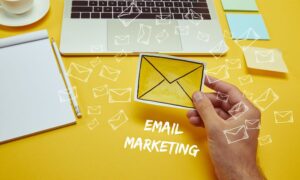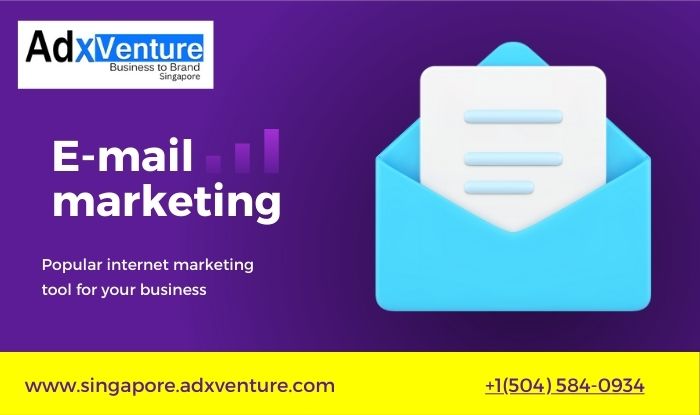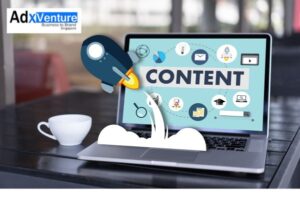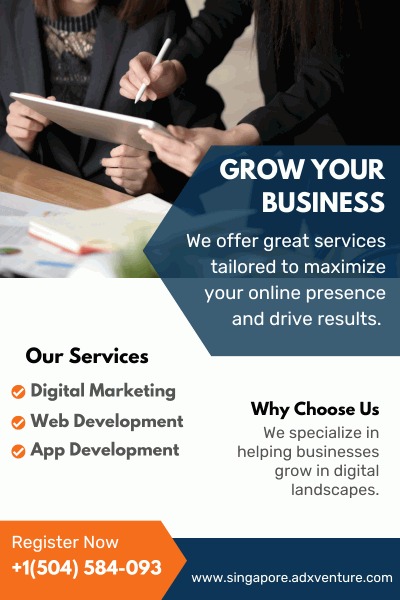In today’s fast-paced digital world, email marketing remains a powerful and effective tool for businesses to connect with their audience. Despite the rise of various social media platforms and messaging apps, email continues to be a preferred method of communication for many individuals and businesses alike. However, with the sheer volume of emails flooding people’s inboxes daily, standing out and engaging your recipients can be a challenge. This blog will explore the art of email marketing by AdxVenture Singapore and provide valuable tips for creating engaging campaigns that capture your audience’s attention and drive meaningful results.

The Power of Email Marketing
Email marketing is a versatile marketing strategy that enables businesses to build and nurture relationships with their audience. When done right, it can yield exceptional results, such as increased brand awareness, customer loyalty, lead generation, and sales. The key to success lies in understanding your audience, crafting compelling content, and leveraging the right tools and strategies to deliver the right message at the right time.
1. Know Your Audience
The foundation of any successful email marketing campaign is a deep understanding of your target audience. Before crafting your messages, take the time to segment your email list based on demographics, preferences, and behavior. By doing so, you may send tailored and pertinent information to various groups, boosting the likelihood of engagement and conversions.
Use analytics and data-driven insights to gain valuable information about your subscribers, such as their open rates, click-through rates, and conversion rates. These metrics can provide valuable feedback on the effectiveness of your campaigns and help you refine your approach.
2. Craft Compelling Subject Lines
The subject line is the gateway to your email content. It’s the first thing your recipients see, and it can make or break the success of your campaign. A compelling subject line should be concise, attention-grabbing, and relevant to the content inside the email.
Avoid using deceptive or misleading subject lines, as they can lead to a loss of trust and high unsubscribe rates. Instead, focus on creating a sense of urgency, curiosity, or offering something valuable to your subscribers.
3. Personalization is Key
Beyond addressing the recipient by their first name, personalization extends.. It involves tailoring the content of your emails to match the interests, preferences, and buying behavior of your audience. This could include product recommendations based on past purchases or content suggestions related to their previous engagement with your brand.
Experian conducted a study that found that personalized emails result in transaction rates that are six times greater than those of generic ones.
Utilize data from your audience segmentation to deliver relevant and engaging content that resonates with individual subscribers.
4. Create Engaging Content
The success of your email marketing campaign heavily depends on the quality of the content you deliver. Your emails should be visually appealing, well-written, and easy to digest. Consider the following content types:
a. Informative Newsletters
Newsletters are a great way to keep your audience informed about your latest updates, industry trends, and valuable resources. Include a mix of blog posts, product updates, and curated content to keep your subscribers engaged.
b. Visual Content
Incorporate eye-catching visuals such as images and videos to make your emails more engaging. Visual content can quickly convey your message and evoke emotions, increasing the chances of interaction and click-throughs.
c. Interactive Elements
Take email engagement to the next level with interactive elements. Polls, quizzes, and surveys can not only provide valuable insights but also make the email experience enjoyable and interactive for your subscribers.
d. Personal Stories and Testimonials
Humanize your brand by sharing personal stories and testimonials from satisfied customers. Authentic and relatable content can establish an emotional connection with your audience, leading to increased trust and loyalty.
5. Optimize for Mobile Devices
It is essential to optimize your emails for mobile devices given the rising popularity of smartphones. A significant portion of your subscribers will open emails on their mobile devices, so make sure your emails are mobile-friendly, with clear and easy-to-tap calls-to-action.
Keep the email design simple and responsive to various screen sizes, and avoid using small fonts or elements that require pinching and zooming.
6. Call-to-Action (CTA)
A call-to-action (CTA) that is both clear and persuasive should appear in every email you send. Whether it’s encouraging the reader to make a purchase, download a resource, or sign up for an event, the CTA should be prominent and easy to find.
Use action-oriented language and create a sense of urgency to prompt immediate action from your recipients. A well-designed and strategically placed CTA can significantly boost click-through rates and conversions.
7. A/B Testing
Effective email marketing campaigns are often a result of continuous improvement and optimization. A/B testing is a powerful technique that allows you to compare two different versions of an email to see which one performs better. You can test different elements such as subject lines, content, visuals, CTAs, and send times to determine what resonates best with your audience.
Performing A/B tests regularly will help you fine-tune your email marketing strategy and identify the most effective elements to maximize engagement and conversions.
8. Monitor and Analyze Results
Monitoring the performance of your email campaigns is essential for understanding what works and what doesn’t. Use email marketing analytics to track key metrics such as open rates, click-through rates, bounce rates, and conversion rates. Analyzing these metrics will provide valuable insights into the effectiveness of your campaigns and help you identify areas for improvement.
9. Maintain Consistency
Consistency is crucial in email marketing. Establish a regular sending schedule to keep your brand top-of-mind without overwhelming your subscribers. Whether it’s weekly newsletters or monthly updates, maintaining a consistent presence will foster a stronger relationship with your audience.
However, be cautious not to spam your subscribers with too many emails, as this can lead to higher unsubscribe rates and negatively impact your brand reputation.

10. Segment and Nurture Leads
Segmentation doesn’t end with knowing your audience; it also involves understanding where each subscriber is in the buyer’s journey. By segmenting your leads based on their stage in the sales funnel, you can deliver targeted content that aligns with their interests and needs.
For example, new subscribers might receive welcome emails and educational content to build trust, while leads showing interest in specific products or services can be nurtured with personalized offers or case studies. By tailoring your messages to match each lead’s position in the buyer’s journey, you can increase engagement and move them closer to conversion.
11. Utilize Automated Workflows
Automation is a game-changer in email marketing. Set up automated email workflows triggered by specific actions or behaviors, such as signing up for a newsletter, abandoning a shopping cart, or completing a purchase. Automated workflows allow you to deliver timely and relevant messages without manually sending emails for every interaction.
These workflows can include a series of emails strategically designed to nurture leads, re-engage inactive subscribers, or provide a seamless onboarding experience. Automation not only saves time but also ensures consistent communication with your audience, enhancing the overall effectiveness of your campaigns.
12. Provide Exclusive Content and Offers
People love to feel special and appreciated. Offer exclusive content or deals to your email subscribers as a reward for their loyalty. This could include early access to new products, members-only discounts, or limited-time promotions. Creating a sense of exclusivity can significantly increase engagement and drive conversions.
Ensure that the content or offers you provide are genuinely valuable and relevant to your subscribers. The perception of getting something exclusive will encourage your audience to open and engage with your emails eagerly.
13. Optimize Email Design for Accessibility
Accessibility should be a priority when designing your email campaigns. Ensure that your emails are easily accessible to all users, including those with disabilities. Use alt text for images to provide descriptions for visually impaired subscribers and ensure that your email templates are compatible with screen readers.
Additionally, avoid relying solely on color to convey crucial information, as color-blind individuals may not be able to interpret it accurately. By making your emails accessible, you create a positive user experience for all subscribers, which can lead to increased engagement and brand loyalty.
14. Leverage Social Proof
Social proof is a powerful persuasion technique that relies on the idea that people are more likely to take action if they see others doing the same. Incorporate customer reviews, testimonials, and user-generated content into your email campaigns to build credibility and trust.
When subscribers see positive feedback from other customers, they are more likely to trust your brand and consider making a purchase. Including social proof can also create a sense of community among your subscribers, fostering a stronger relationship with your brand.
15. Re-Engage Inactive Subscribers
As your email list grows, some subscribers may become inactive, meaning they haven’t opened or engaged with your emails for a long time. Instead of letting them slip away, make an effort to re-engage them.
Create a re-engagement email campaign with compelling subject lines that capture their attention and personalized content that addresses their interests. Offer them an incentive, such as a special discount or valuable resource, to encourage them to take action and reignite their interest in your brand.
If re-engagement efforts are unsuccessful, consider implementing a re-permission campaign, asking inactive subscribers if they still want to receive emails from you. This helps you maintain a healthy and engaged email list and avoid potential spam complaints.
16. Monitor Email Deliverability
Email deliverability is critical to the success of your email marketing campaigns. If your emails end up in the spam folder or aren’t delivered at all, your engagement rates will suffer.
Maintain good email deliverability by following best practices, such as avoiding spammy language, using double opt-in for new subscribers, and regularly cleaning your email list to remove invalid or inactive addresses.
Additionally, regularly monitor your sender reputation and ensure that your domain and IP addresses are not blacklisted. Investing time in maintaining good deliverability ensures that your carefully crafted emails reach the intended recipients and have a higher chance of engagement.
17. Respect Unsubscribers’ Choices
As important as it is to engage and nurture your subscribers, it’s equally vital to respect their choices. If someone decides to unsubscribe from your email list, honor their request promptly. Include a clear and straightforward unsubscribe link in your emails, and make the process easy for the user.
By showing respect for your subscribers’ preferences, you build trust and credibility for your brand. Remember that a clean and engaged email list is more valuable than a large list filled with disinterested or disengaged recipients.
Final Thoughts
Mastering the art of email marketing requires a strategic approach, creativity, and continuous improvement. By understanding your audience, crafting engaging content, and employing best practices such as personalization and A/B testing, you can create email campaigns that resonate with your subscribers and drive meaningful results for your business.
Remember that successful email marketing is not about bombarding your audience with promotional content but rather providing value and building authentic relationships. With the right tactics and dedication, you can harness the power of email marketing to boost engagement, increase conversions, and achieve your business goals.







